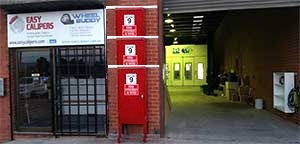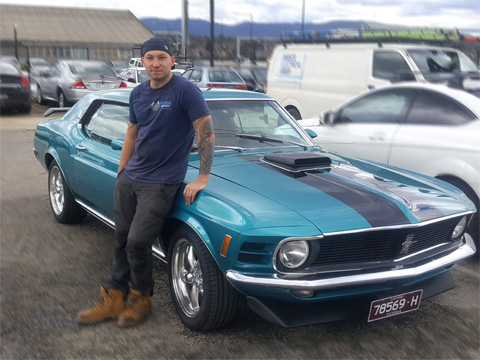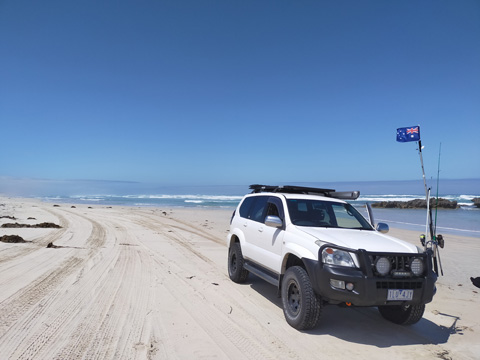Wheel Painting and Wheel Repair Blog
Gutter Rash Rim Repair
I’m sure most of us have have had a bad parking moment and damaged or gutter rashed our wheel, maybe we failed to see a pothole and we heard that horrible crunching sound as the gutter or pothole damage destroyed our wheel.Yes, you've just gouged your alloy wheel rim with grazes and scrapes, possibly even bends and cracks. Gutter-rash can happen unfortunately, and now, getting a wheel fixed professionally is far cheaper than buying a new wheel. A long time ago smaller alloy wheel rims were normal.
The trend toward larger alloy wheel sizes, even on standard family cars, has infiltrated the automotive world, with 18- and 19-inch wheels now most commonly seen on standard run of the wheel family vehicles.
Bigger rims means lower profile tyres, and therefore more chance of the rim being damaged by the gutter.But it is fixable with us.
The Wheel Buddy wheel repair business has been around for more than 10 years and specialises in wheel repair and wheel painting. The company also offers wheel resprays colour change and brake caliper painting to boot.
They can paint your wheels any colour , a popular choice is gloss black wheel respray or black out wheels with black wheel paint.
"What we specialise in is a same day drive in drive out service. We have the cars in here, the wheels are removed, and we paint with 2 pack baked paints back to original factory standard."
Wheel Repair Melbourne
The Art and Advantage of Automotive Alloy Wheel Repair: Restoring Beauty and FunctionalityIn the world of automotive aesthetics and safety, alloy wheels play a pivotal role. They not only enhance the visual appeal of a vehicle but also contribute to its performance and handling. However, exposure to road hazards, curb scrapes, and everyday wear inevitably leads to damage, often manifesting as gutter rash, cracks, or corrosion. While many vehicle owners consider replacing damaged wheels, repairing alloy wheels offers numerous benefits, both economically and practically. This essay explores the importance of alloy wheel repair, the process of fixing gutter rash damage, and the meticulous techniques involved in repainting wheels to factory specifications.
The Importance of Alloy Wheel Repair
Alloy wheels are prized for their lightweight construction and stylish designs, which improve vehicle dynamics. However, their softer aluminum composition makes them susceptible to damage. When wheels sustain curb rash or scratches, their aesthetic appeal diminishes, and their structural integrity may be compromised if left untreated. Repairing alloy wheels restores their original appearance and ensures safety, making it a cost-effective alternative to replacement.
One of the key benefits of repairing alloy wheels is significant cost savings. Replacing a single wheel can be expensive, especially for high-end or custom designs. Repairing allows vehicle owners to retain their original wheels, maintaining the intended look and performance without the hefty price tag associated with brand-new replacements. Additionally, alloy wheel repair is typically faster, often completed within a day, reducing vehicle downtime.
Another critical advantage is environmental sustainability. Manufacturing new alloy wheels involves energy-intensive processes with environmental footprints. Repairing existing wheels reduces waste and minimizes the demand for new materials, aligning with eco-conscious practices.
Understanding Gutter Rash Damage
Gutter rash, also known as curb rash, is one of the most common forms of alloy wheel damage. It occurs when a wheel scrapes against a curb or pothole, causing scratches, gouges, and scuffs on the rim’s outer edge. While gutter rash may seem superficial, if left unaddressed, it can lead to corrosion, weakening the wheel’s structural integrity over time.
The repair process for gutter rash involves several meticulous steps to restore the wheel’s appearance and functionality. Initially, the damaged area is thoroughly cleaned to remove dirt, grease, and loose debris. The technician then assesses the extent of the damage to determine whether simple cosmetic repair or more extensive structural work is required.
The next phase involves sanding and smoothing out the scratched or gouged areas. For minor gutter rash, a process called blending is used, where the damaged paint or coating is carefully feathered into the surrounding surface. For deeper gouges, filler materials such as aluminum or epoxy-based compounds are applied to fill in the gouged areas. Once cured, these fillers are sanded down to match the original wheel profile, creating a seamless surface.
After the surface is repaired and smoothed, the wheel undergoes a thorough cleaning process to prepare it for refinishing. The technician then applies a primer compatible with aluminum, followed by base coats that match the wheel’s original color and finish. Multiple layers of paint may be applied to ensure durability and aesthetic appeal.
Repainting Wheels to Factory Specifications
A critical aspect of alloy wheel repair is repainting to factory specifications. This process is essential to restore the wheel’s original look, ensuring consistency in color and finish. Repainting involves several precise steps to achieve a factory-quality finish.
Firstly, the wheel is masked off to protect areas that should not be painted, such as the tire bead and valve stem. The entire wheel surface is then thoroughly cleaned and prepped, including sanding to create a smooth, adherent surface for the new paint. Any existing corrosion or oxidation is removed during this stage.
Next, a high-quality primer designed for aluminum surfaces is applied. The primer promotes adhesion and provides a uniform base for subsequent coats. Once the primer dries, the technician applies the base coat, which replicates the factory color and finish. Modern spray guns and color-matching technology ensure an exact match to the original factory appearance.
The final step involves applying a clear coat, which provides gloss, UV protection, and resistance to chips and scratches. Multiple layers of clear coat are often applied, followed by curing under controlled heat to ensure a durable, long-lasting finish. The result is a wheel that looks as good as new, matching the factory standards in gloss, color consistency, and protection.
The Benefits of Repaired and Repainted Wheels
Repaired alloy wheels offer various benefits beyond aesthetics. Restoring a damaged wheel maintains the original alignment and balance, which is essential for safe driving and optimal handling. Properly repaired wheels distribute stresses evenly, reducing the risk of further damage or failure.
Furthermore, a well-maintained wheel enhances overall vehicle safety. Cracks or structural weaknesses, if left untreated, could lead to catastrophic failure, especially at high speeds. Repairing and inspecting wheels regularly



